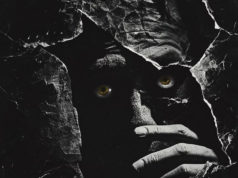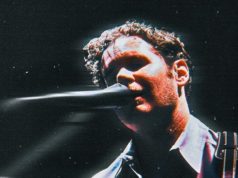Don’t feel bad if the first word that comes to mind when describing Squanto’s music is “weird.” Rickey Wayne Kinney, the 30-year-old Fort Worth musician behind the moniker, tends to agree.
“It’s weird music,” he said. “I don’t mind it being called that. It is weird, so why not call it weird?”
A Squanto live show is a spectacle: tables piled with more electronic equipment than a RadioShack going-out-of-business sale with Kinney, slender, pale, and with his thin brown hair in a ponytail, slouched over them, frantically twisting knobs and pressing buttons, transforming noise into grooves, delivering distorted vocals with a handheld mic which range from a whisper to a scream. Think: J Dilla meets Nurse with Wound, and you will have scratched the surface of the Squanto sound.
Kinney has been making music since he was a teenager but never felt completely satisfied with the bands he tried to put together over the years. In January, at the urging of friend Bryce Christian Braden, he started working earnestly on Squanto. It started with a hip-hop showcase that Braden was hosting at Lola’s Saloon. Braden asked Kinney, who’s also a visual artist, to create some fliers for the event.
Braden “suggested I play one of the shows,” Kinney recalled.
The gig went well, which Kinney said pushed him to focus more on Squanto and build a live set.
As sequencing hardware became less expensive and more readily available, Kinney realized he didn’t need a band to convey his message.
“I got a SP-404, one of the most basic samplers you can get,” he said, “hardware that you can hook straight up to anything, a record player, a Walkman, whatever you want, and get a badass sound. So I thought, ‘I can do that.’ I’ll just hook my mic up to it, but I had too much going on, and it just overloaded.”
That obstacle caused Kinney to seek out new technology: “I needed something to be my bassist, so I had to find something to produce analog bass sounds.”
With that realization, the basic aesthetic of Squanto was born.
“The whole idea is that I have all these machines, analog, digital, and then my own organic self, coming together,” he said, “I like to romanticize it as a cyborg-type of thing, like an almost unwilling participation. A lot of the music points to the struggle of man embarking on technology, the destruction it has caused on our Earth already, and the catastrophes that may ensue because of that froward-type of thinking. It’s kind of forward, let’s be progressive, but not froward.”
Kinney says his music comes from taking a look at society. “It’s driven by what everybody’s paying attention to, getting frustrated about. What is this bullshit we are paying attention to? I’m on the same boat. I’m making music, and I’m affected by it too. We’ve all been affected by it for a long time. We are just now suffering repercussions from it, and for me the music is funny. It’s satirical. I love Frank Zappa. I love all the musicians who saw the humor in things. But I also have a very deep appreciation of musicians who made free-expression music with a little more experimentation. Like free jazz, things like that. Ornette Coleman, crazy stuff that never settled down. Progressive rock, hip-hop.”
After he polished his live set, Kinney decided it was time for Squanto to record an album.
Several weeks ago, Squanto went into the studio with Jordan Richardson (Charlie Musselwhite and Ben Harper, Oil Boom, The Longshots), a.k.a. Son of Stan, the Fort Worth native who played drums in major-label artist Ben Harper’s band while living in Los Angeles.
“I had known Jordan for some time,” Kinney said, “but I had never met him in person. I remember hearing that he won a Grammy and thinking, ‘Oh, wow. This motherfucker is legit.”
But it was Richardson who had reached out to Kinney, wanting to buy a piece of art to serve as the album cover of a future Son of Stan EP. The two got to talking about music, and after Richardson saw Kinney perform, he was sold.
The entire recording process, Kinney said, “was essentially recorded in one take with some overdubs on vocals and little stuff added after. It has a live feel, like one long track, though you can tell that each song is a separate work.”
Once recording and mixing was finished, the album was sent to mixer extraordinaire Danny Kalb (Beck, Icarus Line, Oil Boom). ColorTvDeath will be released next month.
Kinney is planning an album-release party, but until then, he will be selling handmade tape copies to a lucky few (20 people, to be exact). Each cassette will include a digital download and will be available for $10 at upcoming Squanto shows.
For some of Kinney’s visual art, visit cyberdrone_ultrachrist on Instagram.












